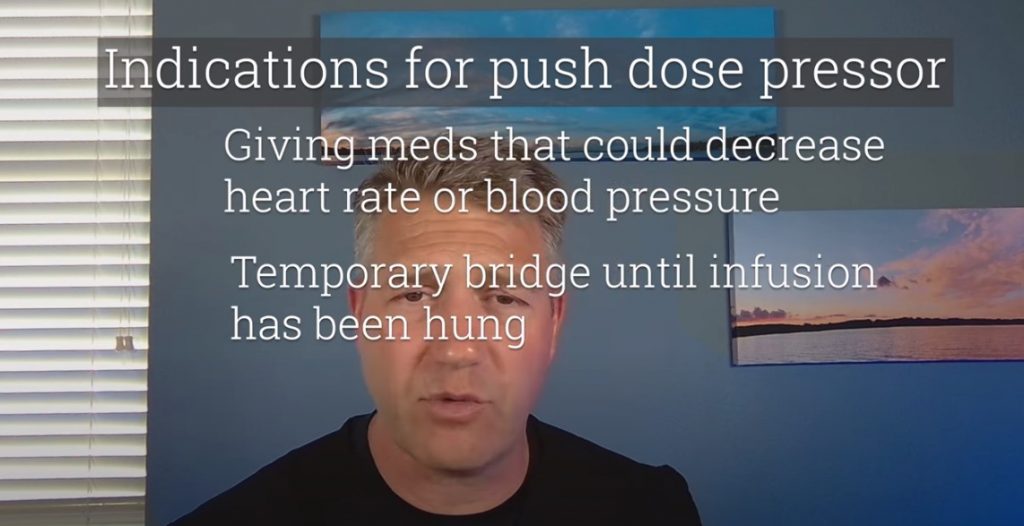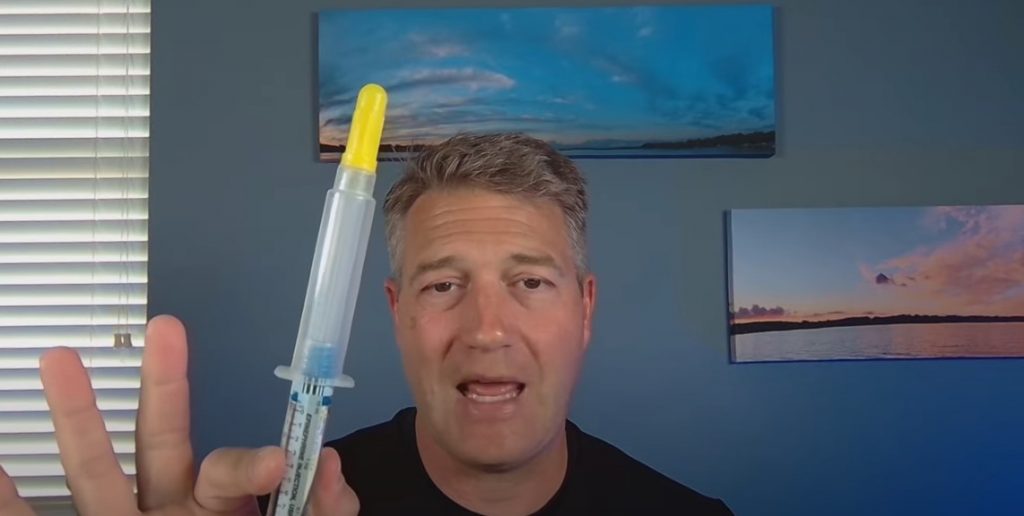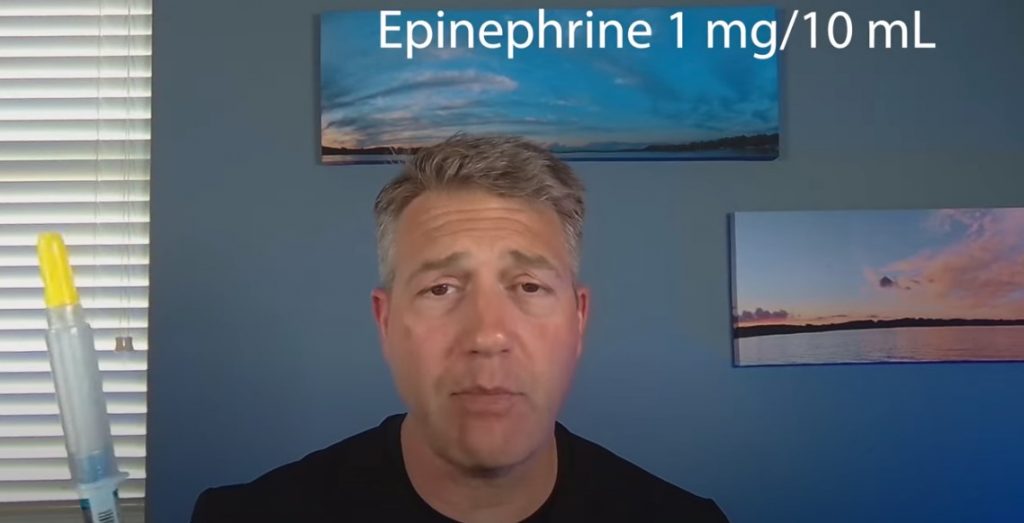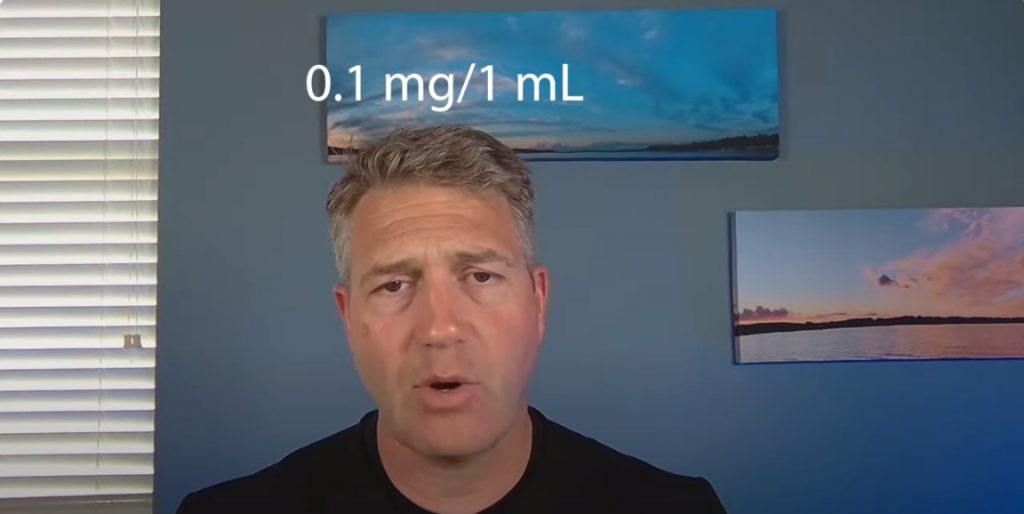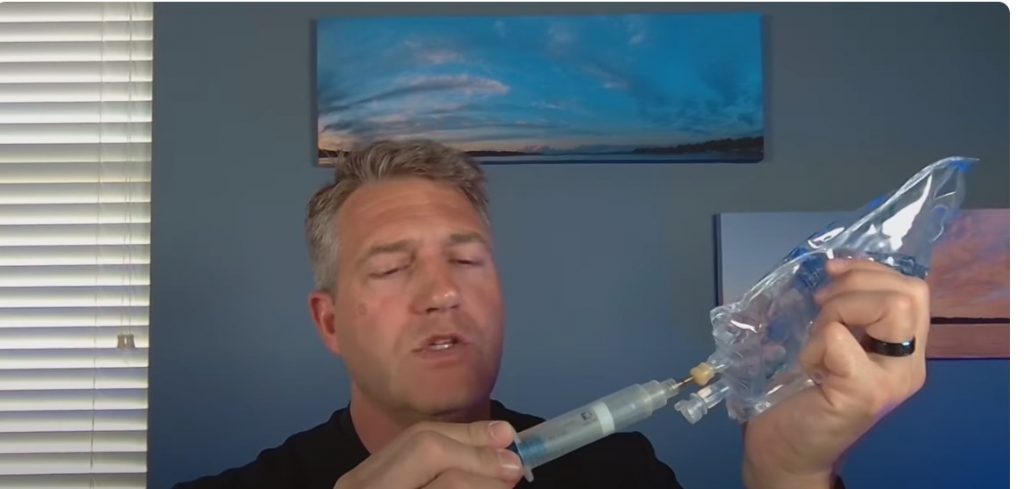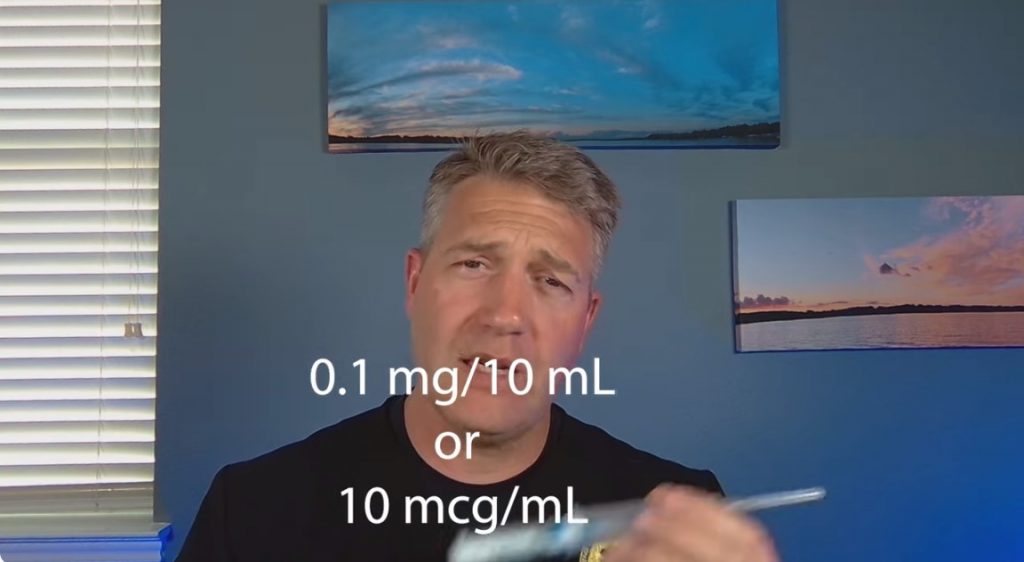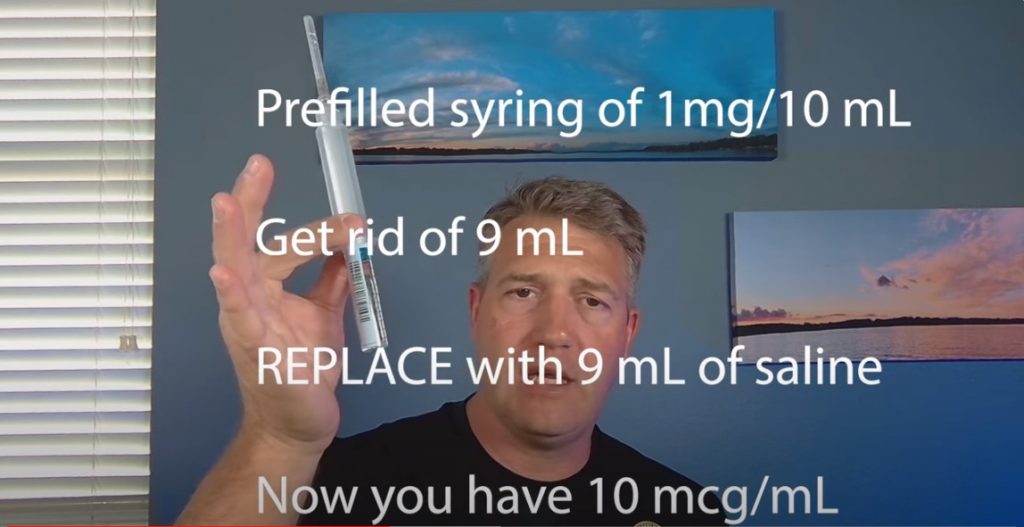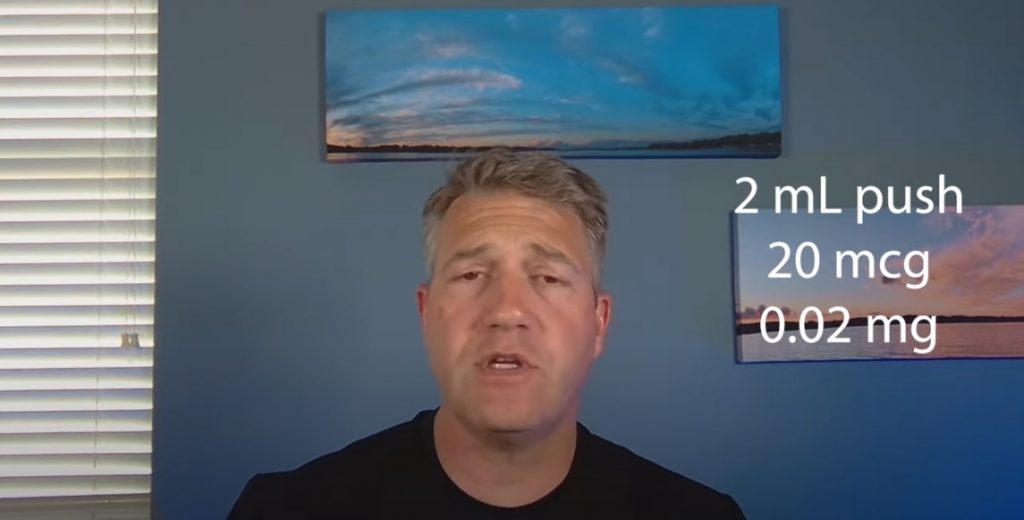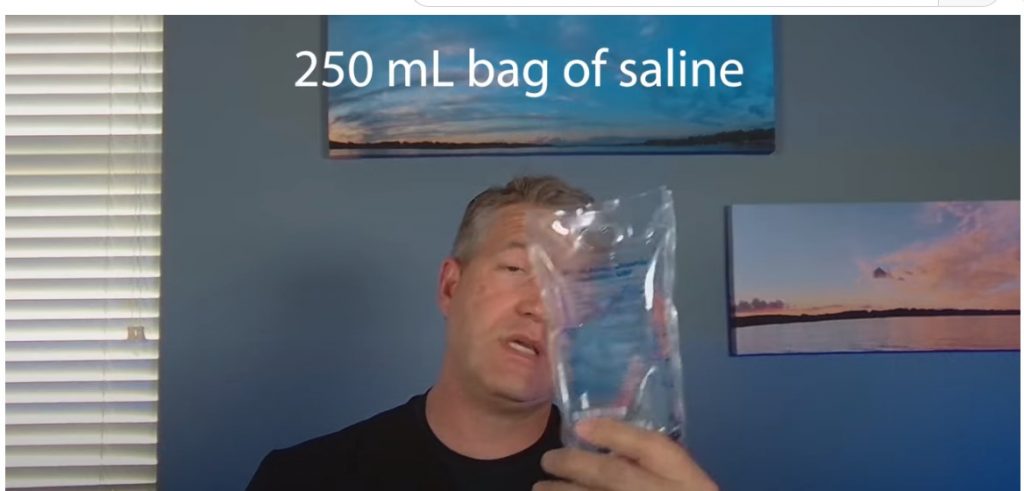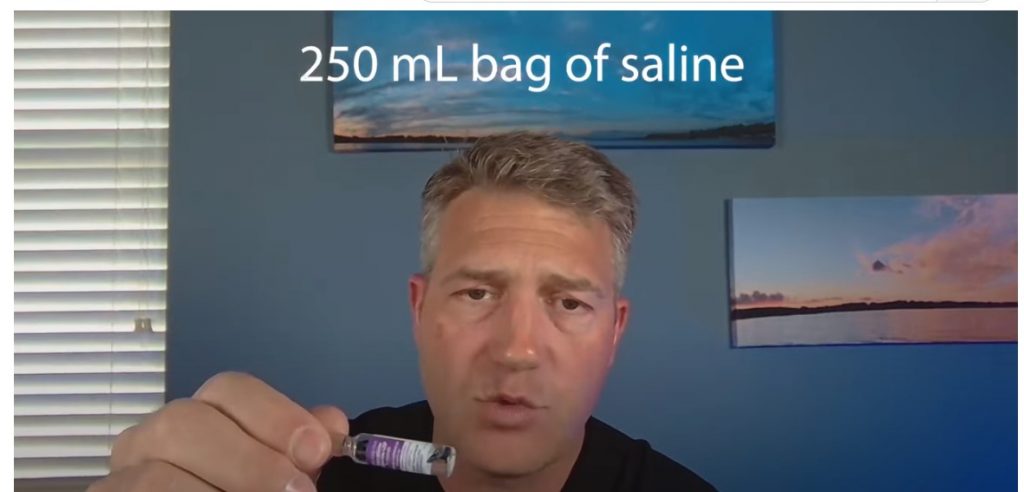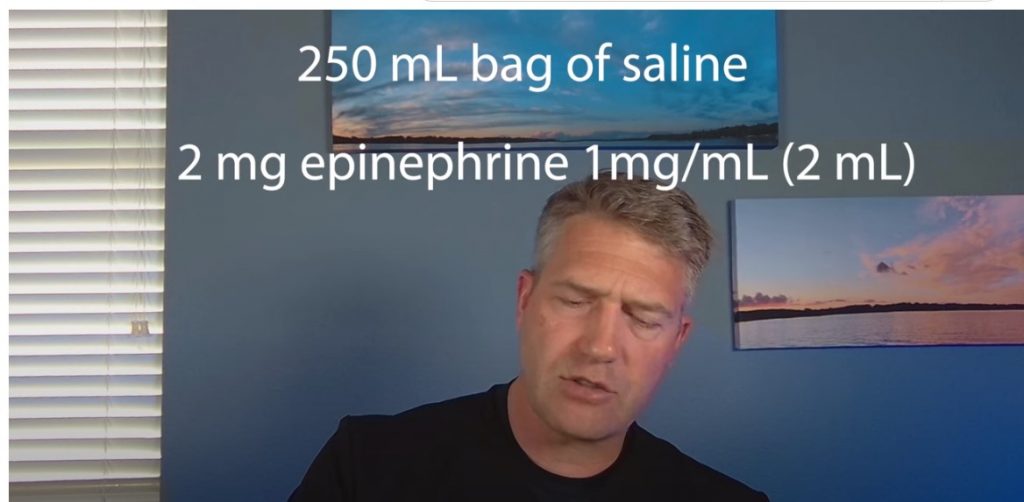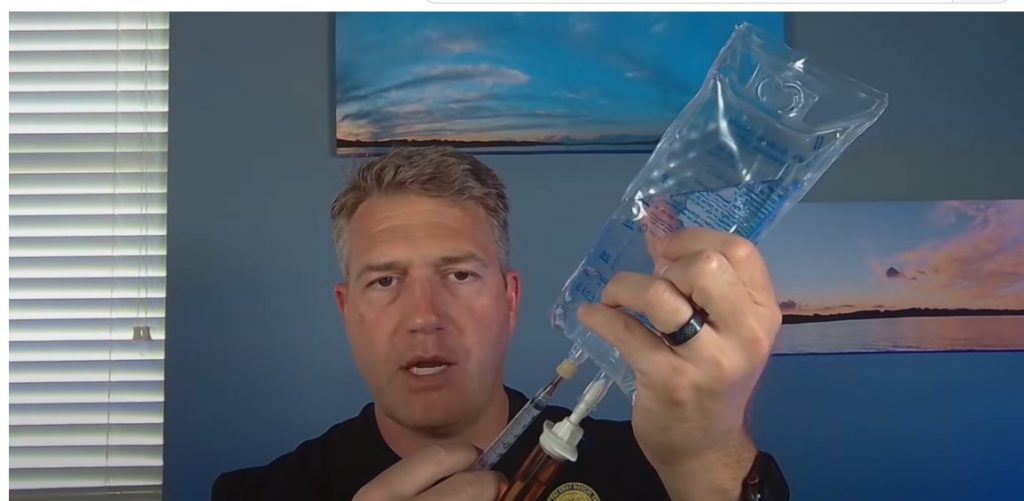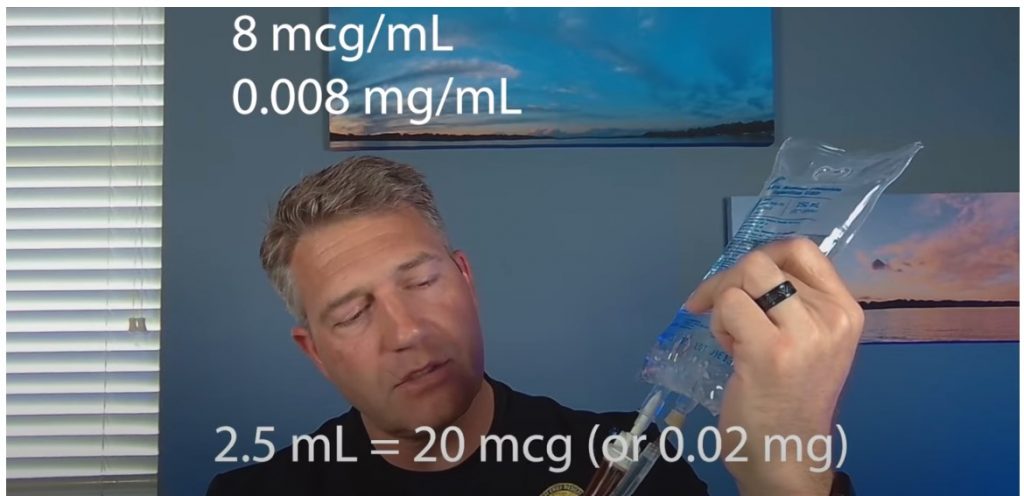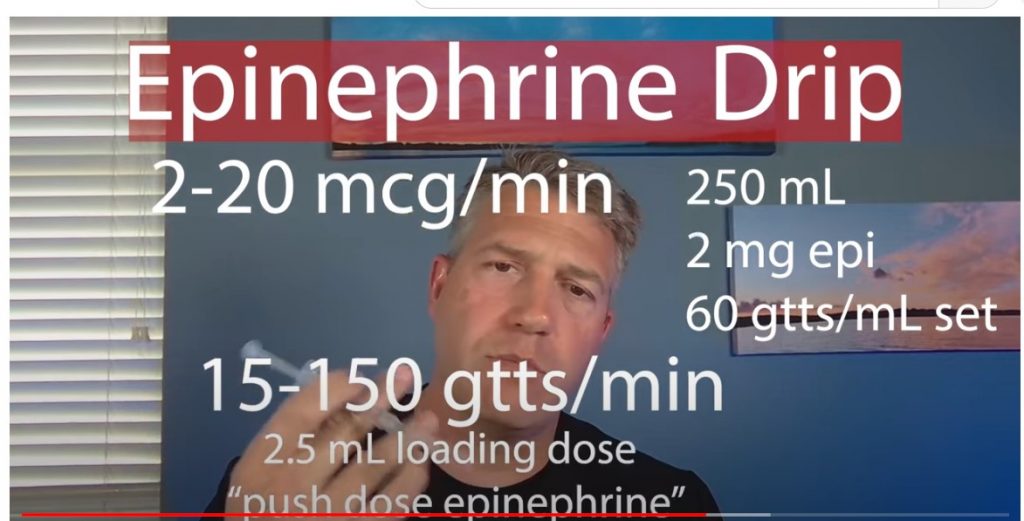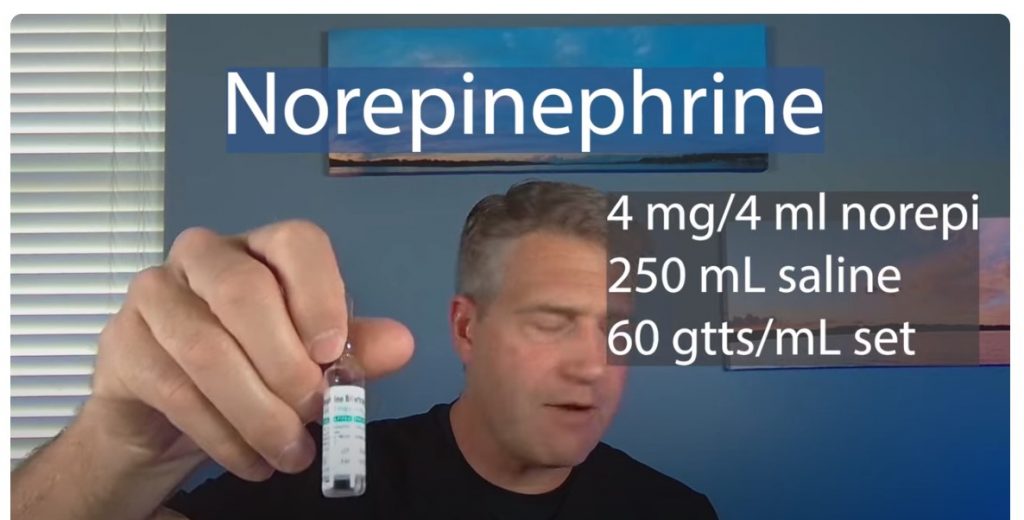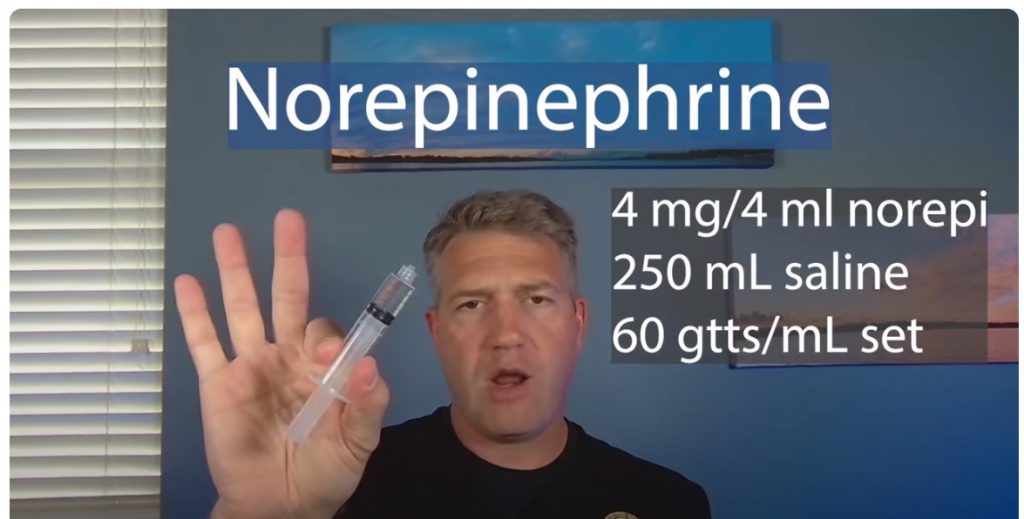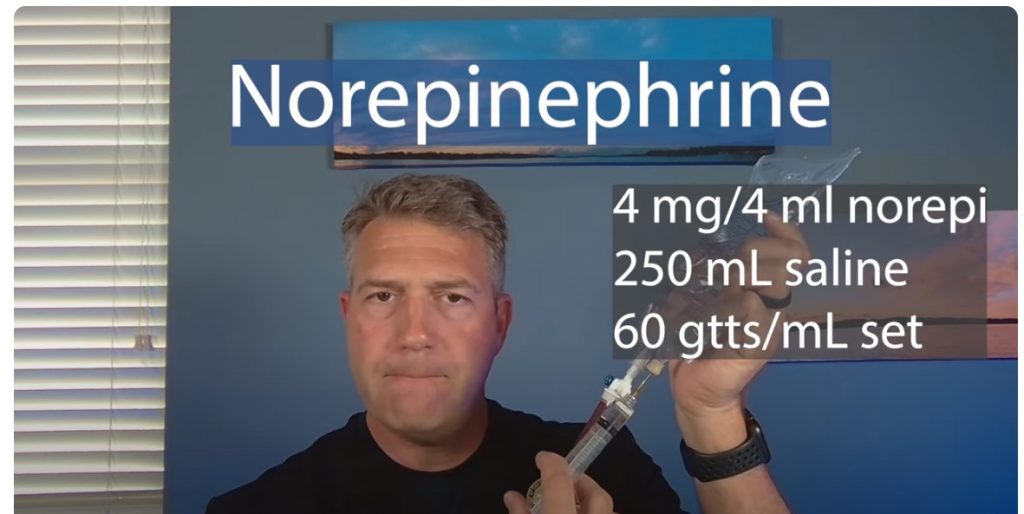Today’s resource is an outstanding brief resource (16:31). The best way to rapid review is to read the auto-generated transcript (so you’ll need to double check that the computer hasn’t made any mistakes). To view the transcript, watch the video on YouTube and follow along on the transcript.
Today, I reviewed and embedded the excellent YouTube video, Push Dose Pressors for EMS: Epinephrine and Norepinephrine.
Mar 9, 2022Sometimes a small dose of epinephrine or norepinephrine can keep a patient from becoming hypotensive during intubation, or may help bridge the patient to a continuous infusion. Dr. Pickett talks about simple methods for mixing and administering push doses of these pressors and how to administer the infusion. NOTE: It is ASSUMED you already know the indications, contraindications, and side effects of these drugs. This video is NOT a comprehensive review of these medications.
Making a push dose epinephrine syringe:
Take a 1:10,000 cardiac epi syringe (1 mg of epinephrine in 10 cc). We’re not going to push this because this is way too much.
This syringe has 1 mg of epinephrine in 10 ml of saline which is 0.1 mg per ml.
Again, the above concentration is way too high to use as a push dose pressor. And badness could happen (like a fatal arrythmia).
So, I’m going to waste 9 cc of the syringe so there is only one cc in the syringe. The concentration is in the syrine is still 0.1 mg per 1 ml, just like it was when there was 10 ml in the syringe. The concentration hasn’t changed yet; we’re about to do that.
I’m going to draw out 9 ml of saline from the bag into the syringe with the one ml of epinephrine, 0.1 mg/ml.
I will draw [up 9 cc of normal saline into the syringe] and now I’ve got 10 cc’s again.
So my concentration in that syringe right there [now] 0.1 milligrams in 10 ml.
So it is [now] .01 milligrams or 10 micrograms per ml 10
mics per ml epinephrine.Summary Slide:
So now when i push this mixture . . .
I’m going to push 2 ml at a time that will give me 20 micrograms or 0.02 milligrams of epinephrine.That’s enough to kind of bump that pressure for just a fewparalytics and so forth or it gets me a chance to mix up whatever infusion of a presser that i’m going to use. . .
We are currently[at the time of this podcast] running out of cardiac epinephrine syringes, 1 mg in 10 ml. So Dr. Pickett gives us an a simpler alternative way to make up a push dose epi syringe, especially when we’re going to start an epinephrine infusion.
When do I like [an] epinephrine infusion? Couple reasons: one, anaphylaxis. Epinephrine is the drug [for that] and I like the intramuscular epinephrine but that to me is a bridge to get themIt’s going there right away and that’ why I like it. So if you’ve got somebody with good anaphylaxis going on, then, yeah, go ahead give them the IM epinephrine but then start an epinephrine infusion.
So, I want to make a an epinephrine infusion. So I’m going to take a 250 ml bag of, in this case saline 0.9 sodium chloride.
And I’m going to grab two of these little guys–this is epinephrine one milligram in [a] one ml [vial] (so the same thing you’re going t0 draw up for your for your intramuscular dose, right).
So I’ll grab two of those [vials] and we’ll do the medication crosscheck. . . .
So i’m going to draw that up and here so i’ve got some already drawn up
I’ve got 2 mls of epinephrine 1 to one thousand or one milligram [per] one ml so there’s two milligrams of epinephrine in here [in my syringe].
Well now I take my trusty 250 ml of fluid and I’m going to inject that [syringe of 2mg 0f epinephrine in 2ml] right in there, so again through the medication port.
9:41 Boom, injecting that two milligrams in here.
And now so mix that up. Okay we’re not like shaking it vigorously we don’t make a whole bunch of bubbles. We don’t make like foam in there. We’re just, you know, inverting it, making sure that it gets mixed around.
9:56My concentration in this bag now is eight micrograms per ml (so eight mics per ml.)Now remember what was the dose for push-dose epinephrine? Oh, yeah, 20 micrograms.So if I draw up now from this bag, two and a half mls [into a syringe], [I’ve] got two and a half ml’s right there [in the syringe].That’s 20 micrograms of epinephrine, so that’s my push dose. . . . Give them a little push dose and start running the infusion. And so that gives them that loading dose brings that pressure up.
And then we can maintain that [pressure] with the continuous infusion of epinephrine.
What dose am I going to continue this [this continuous dose epinephrine] on?So we want to go 2 to 20 micrograms per minute [for our constant infusion].10:40
So if i have this 250 ml bag of my epinephrine solution hannging] and I’ve got this on a 60 drop per ml set (so a micro drip set if you will), then it is 15 to 150 drops per minute for that 2 to 20 micrograms per minute–
So one drop every four seconds up to 150 drops per minute so. It’s like two and a half drops per second
11:07
So you can just titrate that up and down as you need to.
Now that’s approximate, okay. Like these aren’t that precise instrument. but that’ll get you where you need to be.
11:18
So again it’s 2 to 20 mics per minute, 15 to 150 drops per minute, is your dose when running the infusion
Two and a half cc’s gets you your bump to bring their pressure up to give them that loading dose.
Obviously, we’re not going to treat hemorrhagic shock with a pressor, but others (spinal shock, neurogenic shock,cardiogenicshock, septic shock)–those things we will treat with norepinephrine preferentially.11:5111:58
I get out my norepi. I’ve got four mls (four milligrams) norepinephrineright here. I’ll pop that and draw that up.
And now i have four mls right here of norepinephrine again i’m going to taket hat 4 mls
and i’m going to put it in a 250 cc bag 9250 ml bag) of saline.
I’m just going to pop this in here like so.
Boom, four ml’s in there. [Invert the bag back and forth to mix the solution. Don’t shake it as we don’t want bubbles in the solution.]
What’s my concentration here?Now okay it is 16 micrograms per ml in here.So what is my push dose for norepinephrine?Usually it’s around 20 to 30 micrograms.So if I draw up 2 mls of this [it will be 32 micrograms]So this will be close enough. 2 mls will get you 32 micrograms of this.
And that 2ml that’s that’s your push dose right there.
So you give them that 2ml bump and then you can start the drip.
If you are just doing it because you’re
gonna rsi somebody and they’re just kind of, you know, tenuous blood pressure but they’re not to the point where you want
to start them on a presser just yet, then okay mix this up drop your 2 mls push that as your push dose presser before you push the paralytics and the and the sedatives.
And then if you need it you’ve got it [the infusion bag].
It’s already made because this is the concentration that we’re going to use for running an infusion. so what’s our dose for an infusion for norepinephrine?
[It] is 2 to 12 micrograms per minute. So with at this concentration right here
it’s between 8 and 45 drops per minute so a little bit tighter range than what we have with the epinephrine.
But that will get you where you need to be.
Again that’s on a 60 drop micro drip set.

